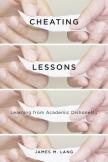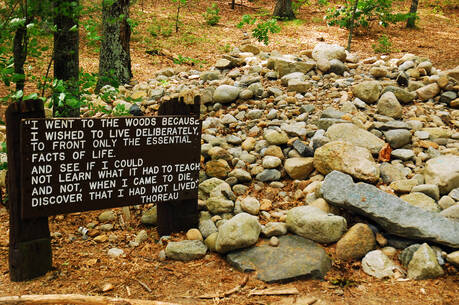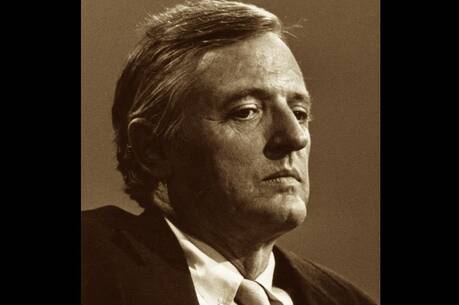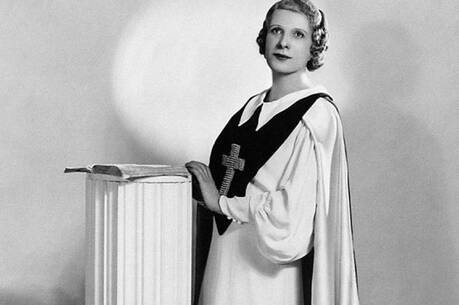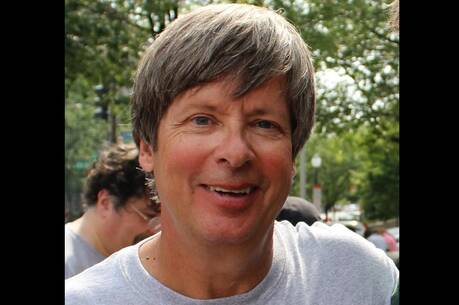Everybody Does It?
In Cheating Lessons, James Lang presents the good and bad news about cheating in higher education. The good news is that the rate of cheating has not changed much since 1963, when a doctoral candidate at Columbia University, James Bowers, conducted a survey of more than 5,000 college students. The bad news is that three-fourths of college students claim they have cheated at least once in their academic careers. This book explains what faculty and administrators may learn from the phenomenon of cheating. Lang is associate professor of English and the director of the center for teaching and learning at Assumption College in Worcester, Mass., as well as a columnist for the Chronicle of Higher Education.
Lang emphasizes the promotion of learning more than the prevention of cheating. When he first delved into the subject of cheating he found that much of the research addressed the disposition of the college students: what kind of students cheated, how often and why. Coincidentally he became interested in cognitive theory and its implications for higher education. His book explores the problem of cheating through the lens of cognitive theory. He hopes to empower the faculty to modify the learning environment and in this way to deter cheating. His audience is faculty and administrators of higher education institutions.
The book is timely, following last year’s scandal at Harvard University, where 60 students were suspended for cheating in a course in government. It also comes on the heels of a recent study by four professors of business, published in the Journal of Personality and Social Psychology (2013), entitled “The Cheater’s High: The Unexpected Affective Benefits of Unethical Behavior.” Their study concludes that people who cheat in situations where they believe no one gets hurt, including computer piracy, tax evasion, insurance fraud and scholarship, experience positive feelings in ways that honest people do not.
Given this attitude toward cheating that permeates our culture, how can it be controlled on the college campus? Lang recommends a fundamental shift in the planning of the course syllabus. A professor should ask whether the outcome of the class is to be measured in terms of either “performance,” as on a test, or “mastery” of the material. To give an example: a performance-oriented course relies on “extrinsic motivation.” It emphasizes one or two devices, like the mid-term and final exams, as the way to measure how much students have learned. Now, imagine that this course is required by the university. Perhaps it is a large class of 1,000 students, so there is little if any personal contact with the professor. Also, many of the students may fail to see the relevance of the course material for their own field of interest. They may simply need a grade to pass or to maintain their average. Lang argues that this kind of performance-driven course provides an incentive to cheat.
To counter this, Lang encourages students to “master” the material. Here the professor employs “intrinsic motivation” connecting the course material to questions and interests that the students bring to class. They are encouraged to respond to the material with their own unique and grounded assessments.
Lang presents a wide array of studies on cheating and profiles professors who model his method. These professors are distinguished academics who draw thousands of students to their classes. Some faculty members reading this may feel envious of their resources, namely, their personal charisma and the availability of a cadre of tutors to share the workload.
His approach towards ethics and cheating raises a question. Lang contends that ethics should be handled by the ethics professor while the rest of the faculty should resist any attempt to “harangue” students into behaving in ethical ways. Of course, any sort of haranguing will dull one’s sensibility towards morality. Nevertheless, from my experience, the faculty and administration need to present the moral responsibility of academic honesty, lest this method become all too pragmatic. Cheating entails stealing (by not properly attributing authorship) and lying (deliberately deceiving an instructor) with the probable result of earning a higher ranking than deserved and ruining an opportunity for an honest student. Eventually all college students will have to face the lure of the “cheater’s high.”
This objection notwithstanding, this book should make excellent reading for faculty discussion groups. And while it is aimed at the university level, high school faculties and staff will find it helpful as well. Lang points to the future of teaching. As he explains, we now work in the midst of an explosion of information about how humans learn. If we can translate these findings into classroom practices, we will worry less about cheating.
This article also appeared in print, under the headline “Everybody Does It?,” in the April 7, 2014, issue.


